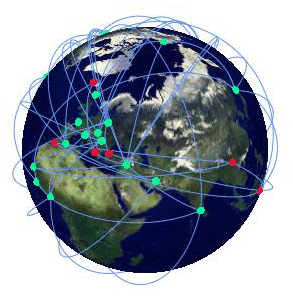For over a year now, my main research focus has temporarily shifted away from gravitational physics towards the mathematical modelling of COVID-19 (for obvious reasons). Although this might seem like a big change, the two areas actually share a lot in common. One of the main techniques for understanding cosmological dynamics as well as the spread of infectious disease is the theory of dynamical systems, which has played a key role in my research for many years. Similarly, Bayesian statistics are extremely useful for analyzing both astrophysical observations and COVID case counts.
I have also been interested in how various phenomena spread on graphs. Several years ago, I made this video on how memes go viral on the internet:
The idea is that there is a social network online describing the connections between individuals. If one person becomes interested in something (back then, the “ice bucket” challenge was in vogue), they might share it with their contacts, who in turn might share it with other people, and so on.
You might be thinking that this process sounds an awful lot like how an infectious disease spreads. The purpose of the above video is to push this analogy as far as we can by creating a disease model of how a “meme” spreads on the internet.
How about actual infectious diseases? Adapting the techniques in the video to model COVID-19 in New Brunswick was the topic of a problem at the 2021 AARMS Industrial Problem Solving Workshop. I presented this problem in collaboration with The Black Arcs, a local Fredericton company with expertise in detailed computer simulations of daily life in cities and towns. This project is ongoing, and is starting to yield some exciting results.
